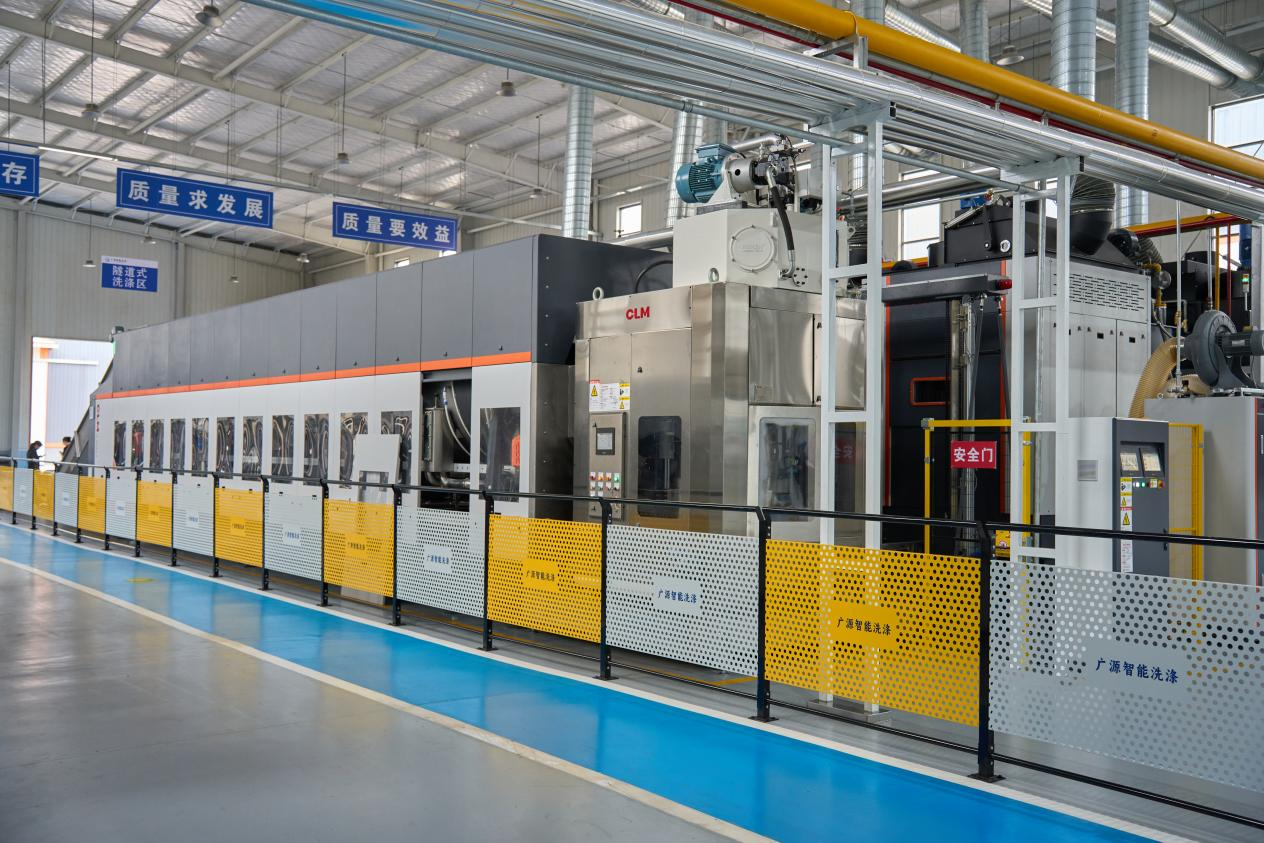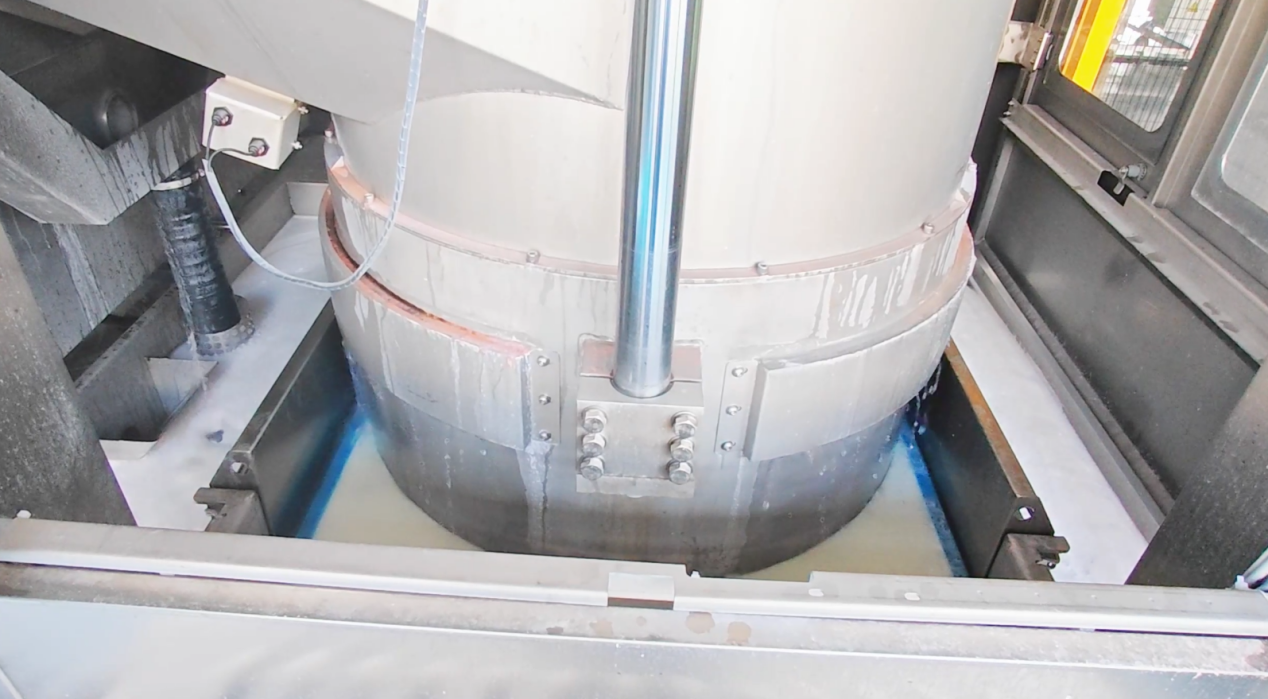In recent years, as more and more laundry plants have chosen tunnel washer systems, laundry plants also have a deeper understanding of tunnel washers and have gained more professional knowledge, no longer blindly following the trend to buy. More and more laundry plants set the degree of cleaning, high efficiency, lower damage rate, lower water and steam energy consumption, etc. As important parameters and standards for the purchase of a tunnel washer system, in addition to paying attention to the stable operation of the equipment, when purchasing the tunnel washer.
A large number of customers who purchased the tunnel washer system from some brands early said that, in addition to labor savings, the efficiency of the actual use of the tunnel washer system did not improve, and the consumption of water, electricity, and steam did not reduce. Even the damage rate increased greatly. This is because the tunnel washers from some equipment manufacturers in the early stage are just blind imitations. These equipment manufacturers do not understand the structural principle of the equipment, resulting in the production of tunnel washers causing a large number of linen damage, and can not find a good solution, and can only blindly reduce the pressure of the press to alleviate the customer’s linen damage phenomenon. As a result, the moisture content of linen is constantly increasing, the steam energy consumption of customers is constantly increasing, and the efficiency of equipment is also constantly decreasing.
The efficiency of the tunnel washer and the damage to linen are closely related to the water extraction press. If the press in the whole tunnel washer system does not give force, the whole tunnel washer does not give force. So, the press is the core of the entire system. We will deeply analyze why the press will cause linen damage from the design, the structure, and the principles for you.
Characteristics of a Good Water Extraction Press
● Structure Stability
The structure and stability of the press: rely on the structure of the machine, configuration, and hydraulic system
● Squeezing Time
The time of pressing a linen cake: determine the production efficiency of the whole tunnel washer system
● Moisture Content
The moisture content of Linen after being pressed: determine whether the laundry factory is energy-saving or not
● Damage Rate
Squeezing out the breakage of the linen breakage rate: Laundry plant cost control and reputation.
We will give a detailed analysis of the fourth characteristic. In terms of the damage rate of the entire laundry plant, in addition to the damage caused by the burr of the inner drum of the tunnel washer and the aging of the linen, the rest should mainly come from the damage of the water extraction press. When it comes to the damage of the press, we must understand the working principle of the press and the structure of the press.
The Improper Settings of Pressing Programs
There are several reasons for the press to cause linen damage, and this article focuses on improper press program settings.
At present, most of the linen washed by the laundry plant is provided by the hotel, and the types of linen are very complex. Laundries that serve hotels may have as few as 40-50 hotel clients, while some larger ones can serve over a hundred. The specifications of each linen, the density of the fabric, and the material are not the same. Also, factors like the use of time and the degree of old and new are very different. As a result, pressing procedure requirements are very high.
If the press efficiency is high, the water content of the pressed linen press will be low. It mainly uses the water sac to press the surface of the linen for extrusion, and the water inside the linen is quickly squeezed out to achieve the purpose of dehydration. The rapid discharge of water from the interior of the linen will produce greater pressure on the linen. If the quality of all linen is uniform, we know from testing that it is no problem to set a fixed press time and pressure value to ensure that the damage to linen is under control.
In fact, the specifications of linen, fabric density, material, use time, and old and new aging degree are not the same. At this time, with the same time and pressure, there is no way to ensure that the pressed linen is not damaged. Many laundry plant owners say, what is the reason why my brand-new linen is crushed? The density of the newly purchased linen is relatively large, and the linen manufacturer has made a sizing treatment in order to make the new linen look relatively flat. At this time, the new linen is permeable, and the permeability is not good. If the press pressurizes the linen in a very short period of time, the air and water inside the cloth can not be discharged in time. Due to the relationship between pressure, it will cause damage to the linen.
Though there was no immediate damage, the fibers were already damaged. Even if the water permeability and air permeability are good after washing for a period of time, the life of the linen will be reduced because the fibers have been damaged in the early stage.
CLM Solutions
The press system selected by CLM can choose different press procedures according to the complexity of the linen. (Linen is divided into: towels, sheets, quilt covers, pillowcases, new and old, cotton, polyester, blended, etc.)
The service life of the linen is different, and the pressure that the fabric can withstand is different.
There are different fabric densities of linen and exhaust performance, which also require different actions to control.
There are different fabric densities of linen that need different actions to control.
CLM presses have different pressing methods to control breakage for these influencing factors. CLM press is divided into a pre-pressing section and three main pressure sections. Both pre-pressing and not pre-pressing can be chosen. It can completely set different pressing procedures according to different linens so as to reduce the damage rate of linen.
❑ Pre-pressing and Main pressing
The main function of pre-pressing is: when the linen is just poured into the press basket, the water is more, and it is uneven. Some linen is attached to the hopper. The pre-pressure can be set at a very low pressure, and the corresponding position to discharge a large amount of water and air while leveling the uneven fabric. In this cycle, the water sac does not produce pressure.
Then apply the main pressing. The first section is the process of the second drainage and exhaust, and the water sac position needs to be pressed through the press basket exhaust hole to basically empty a large amount of water and air from the linen. This step can choose to stop to protect the linen. Low speed and low pressure should be ensured to squeeze out the moisture adsorbed on the linen. At this stage, the linen is pressed tightly with slow pressure to avoid breaking the linen at the high-pressure stage, while squeezing out a large amount of moisture adsorbed in the linen.
When the second-stage water sac reaches a certain pressure, it is switched to the third stage for pressure preservation. The function of this stage is to squeeze out the residual water. This stage can set the time. The longer it takes, the more water it squeezes out.
❑ Pressing Towels
The towel itself is not easily crushed. If a towel pressing program cannot reach 42 bar above (CLM press can reach 47 bar), then the moisture content of towels will be on the high side. Drying time and energy consumption will be higher, which does not conform to the requirements of the standard tunnel washer system.
When the pressing towel program is set, the pre-pressing stage can be canceled, and more time should be given to the main pressing stage and the pressure-holding stage. The longer the pressure holding time, the more water will be extruded, the lower the moisture content, the shorter the drying time, and the more energy saving.
❑ High-Density Sheets and Duvet Covers vs Old Sheets and Duvet Covers
Some hotel customers continue to use four or five-year-old sheets and duvet covers that are not broken. For this type of bed sheet and duvet cover, we can control the damage by adjusting the speed, position, and pressure of each step. Different procedures are developed for each linen to control the breakage rate, rather than blindly reducing the pressure of the whole press to prevent the breakage of the linen, which will inevitably increase the steam consumption of the laundry plant.
The structural design and hardware aspects of the press will also have an impact on the damage to linen. We will continue to analyze it in the subsequent article.
Post time: Apr-16-2025





